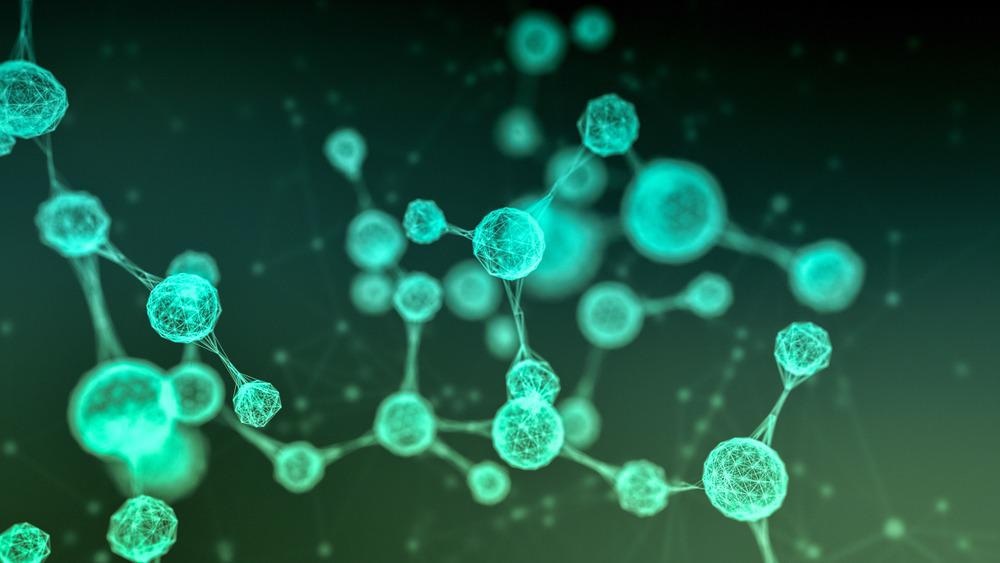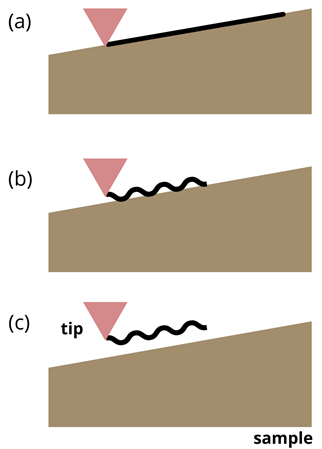Molecular structure elucidation by atomic force microscopy (AFM) has been demonstrated as a powerful method to gain insights into the structure and formation of matter.

Image Credit: lucadp/Shutterstock.com
Molecular structure elucidation images the fundamental building blocks of molecules with the highest resolution. Identifying molecular structures is of great importance in chemistry, for example, in synthetic chemistry, pharmacy, life sciences, and environmental sciences.
Structure elucidation of molecules is often carried out by one of several techniques. These methods include nuclear magnetic resonance (NMR) spectroscopy, mass spectrometry, infrared spectroscopy, and X-ray crystallography.
Advantages of AFM for Molecular Structure Elucidation
AFM has proven to be a powerful tool for high-resolution imaging of detailed molecular structures. In contrast to the imaging techniques mentioned above, AFM offers two unique advantages for imaging molecular structure. One, AFM can resolve the structure of an individual molecule. In combination with atom manipulation techniques, AFM also allows for on-surface synthesis. Synthesis is constructing a molecule by assembling individual atomic elements and structures.
Aside from imaging individual molecules, AFM elucidates molecular adsorption. Adsorption is when molecules from a gas, liquid, or dissolved solid stick to a surface. Properties of individually adsorbed molecules, such as conformation, adsorption geometry, adsorption site, charge state, and charge distribution can be imaged by AFM.
Principles of Atomic Force Microscopy
AFM senses very weak forces. The fundamental concept of AFM is that a spring-like nanoscale tip attached to a cantilever is scanned across a surface. The back of the cantilever is coated with a reflective material and a laser beam is focused on the back of the cantilever and the reflected light is captured by a photodetector. The underlying principle of AFM is illustrated in Figure 1.
When the tip encounters a force exerted by the interaction with the surface, it is compressed or stretched. The changes in the tip length are due to the force deflecting the laser beam and imaged on the detector. Topographical information can be obtained by scanning the tip across the entire surface line by line.

Figure 1: Schematic illustration showing basic principles of AFM. Image Credit: Ilamaran Sivarajah
AFM is operated in two different modes: static mode and dynamic mode. In static mode, the tip is dragged across the sample while in full contact. This mode works better on hard samples as the “dragging” motion can easily damage soft samples.
Dynamic mode limits the contact between the sample surface and the tip to protect the sample. Dynamic mode is operated in either tapping mode or non-contact mode. In both these modes, the cantilever is driven to oscillate above the sample surface. The tip moves up and down in a wave-like motion. Forces detected at the tip induce a change in the frequency or amplitude of the wave motion.
The main difference between the tapping mode and non-contact mode is that in the tapping mode the tip comes in contact with the surface on the troughs of the wave motion. The operational modes of the AFM are illustrated in Figure 2.

Figure 2: Schematic illustrations showing the operational modes of AFM (a) Contact mode, (b) Tapping mode, (c) Non-contact mode. Image Credit: Ilamaran Sivarajah
Applications of Atomic Force Microscopy
AFM allows the detection of many types of forces that exist in nature, including Van der Waals forces, mechanical contact force, capillary forces, magnetic forces, Casimir forces, and forces induced by chemical bonds. Detecting and imaging these forces has elucidated the structure of molecules.
Molecular elucidation has advanced many scientific applications. For example, cellular components, cells, or tissues in biochemistry applications, imaging polymers, nanostructures, or other materials in chemistry, materials science and nanotechnology, and cancer research.
Combining AFM with Other Techniques for Molecular Structure Elucidation
Combining AFM with other microscopic, optical, and novel techniques has improved the image resolution of molecular structures. AFM used with tunneling spectroscopy has been demonstrated to detect electric currents on the order of zepto-Amperes (a billion trillion times smaller than the amount of current used for a standard table lamp).
Electron transfer rates in molecular systems and how energy propagates in an individual molecule were studied with this measurement.
Electrospray ionization deposition combined with an AFM and scanning tunneling microscope has been used to elucidate large and complex molecules of sizes up to several thousand atomic units.
AFM has helped to identify molecular compounds in complex molecular mixtures. The chirality of a single molecule has also been resolved by AFM. A non-symmetric molecule is chiral as it cannot be superposed on its mirror image.
Challenges and Future Prospects of Atomic Force Microscopy
There are several technical challenges in AFM. The speed at which the tip is scanned is limited. This is due to the mechanical arrangement of the various sensing and detection elements of the AFM. Developments in camera, detection, and optomechanical technologies are expected to improve the AFM scan speed.
Improvements to the sensitivity of the tip are also expected to enhance the performance and results of the AFM. Combining experimental techniques such as vibrational spectroscopy, Kelvin probe microscopy, or adapting experimental techniques developed in other scientific disciplines have been proposed.
References and Further Reading
Jinbo Peng, Jing Guo, Runze Ma, Ying Jiang, Water-solid interfaces probed by high-resolution atomic force microscopy, Surface Science Reports, 2021,100549,ISSN 0167-5729. https://doi.org/10.1016/j.surfrep.2021.100549
Shadi Fatayer, Nikolaj Moll, Sara Collazos, Dolores Pérez, Enrique Guitián, Diego Peña, Leo Gross, and Gerhard Meyer, Controlled Fragmentation of Single Molecules with Atomic Force Microscopy by Employing Doubly Charged States. Phys. Rev. Lett. 121, 226101, 2018. https://journals.aps.org/prl/abstract/10.1103/PhysRevLett.121.226101
Gross, Leo et al. Atomic Force Microscopy for Molecular Structure Elucidation. Angewandte Chemie 57 15 (2018): 3888-3908, https://doi.org/10.1002/anie.201703509
Fabian Schulz, Mario Commodo, Katharina Kaiser, Gianluigi De Falco, Patrizia Minutolo, Gerhard Meyer, Andrea D`Anna, Leo Gross, Insights into incipient soot formation by atomic force microscopy, Proceedings of the Combustion Institute, Volume 37, Issue 1, 2019, Pages 885-892, ISSN 1540-7489, https://doi.org/10.1016/j.proci.2018.06.100
Disclaimer: The views expressed here are those of the author expressed in their private capacity and do not necessarily represent the views of AZoM.com Limited T/A AZoNetwork the owner and operator of this website. This disclaimer forms part of the Terms and conditions of use of this website.